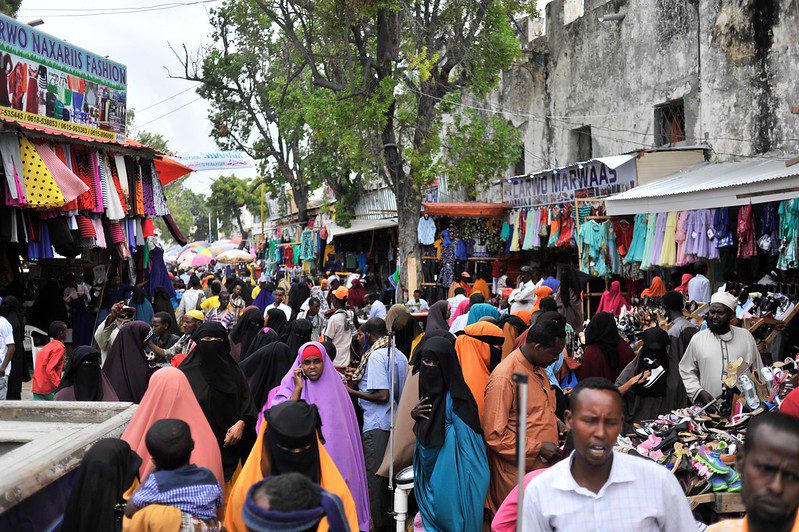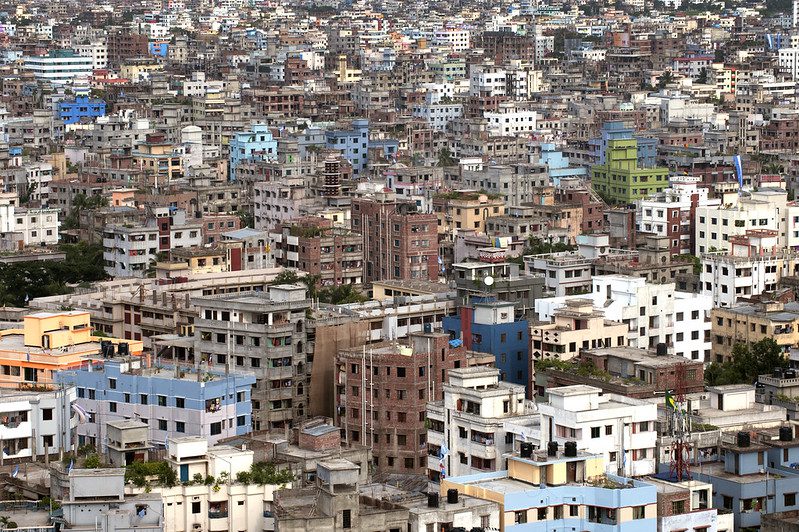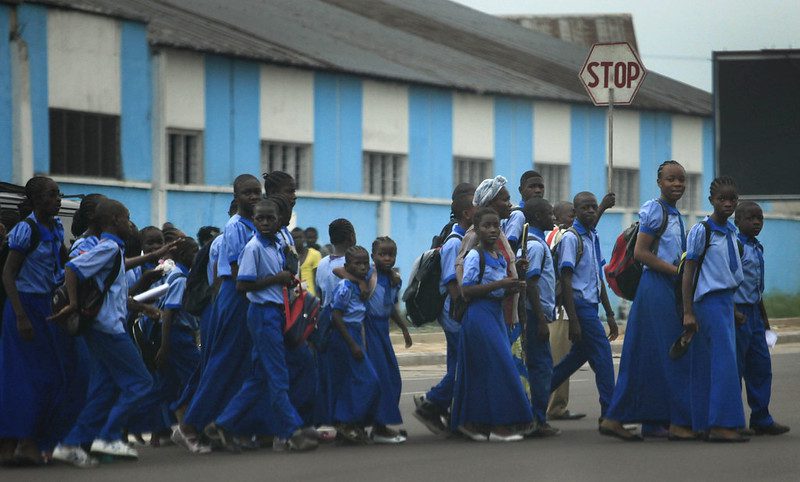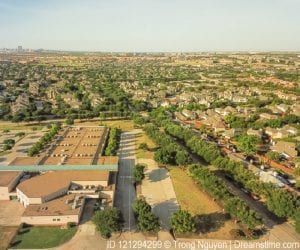As the population of Earth grows, cities, as hubs for culture, jobs, and education, are facing rapid expansion – some more than others. Because of this, high volumes of people are living in increasingly smaller plots of land to accommodate the influx of residents.
As of the end of 2023, the top ten most densely populated cities in the world were all located in either South Asia or Africa and limited to only five countries. High density in these regions doesn’t necessarily equate to the cities with the largest populations. Instead, a common thread among them is that the city, country, or surrounding areas have experienced an influential change that caused their populations to grow at a rapid rate. Some have populations that have grown by several million in the past ten years, putting a strain on what their existing infrastructure can support and what development can keep up with.
The World’s 10 Densest Cities
Here are the 10 most densely populated cities in the world and a glimpse into what life there is like.
1. Mogadishu, Somalia
- Mogadishu Population Density: 33,244 people per kilometer
- Population growth over 20 years:
2003 – 1,310,000
2013 – 1,608,000
2023 – 2,610,000

The most densely populated city in the world is Mogadishu. It is the capital of Somalia, just north of the Indian Ocean. Somalia as a whole has experienced a great deal of political unrest and instability, but has been recovering after establishing the Federal Government of Somalia in 2012. For the coastal city of Mogadishu, this means many refugees are returning to the city to help rebuild Somalia.
2. Tanta, Egypt
- Tanta Population Density: 31,360 people per kilometer
- Population growth over 20 years:
2003 – 405,000
2013 – 460,000
2023 – 523,000
The “Boss Town” of Egypt, Tanta is primarily a center for cotton ginning, housing a variety of other industries including wool spinning, flour milling, and production of tobacco products attracting workers to the city. The city is also known for being a “university town,” with many higher education institutions bringing in high populations of students every year and contributing to its high density.
3. Dhaka, Bangladesh
- Dhaka Population Density: 30,911 people per kilometer
- Dhaka population growth over 20 years:
2003 – 11,484,000
2013 – 16,389,000
2023 – 23,210,000
 Dhaka became the capital of Bangladesh in 1972. Since then, the population has skyrocketed, bringing economic diversity and social atmosphere of the city with it. The large publishing and trading industry, and government work, helps employ the growing population. Affordable housing has become less and less of a reality for residents, despite regular construction of high-rise apartments.
Dhaka became the capital of Bangladesh in 1972. Since then, the population has skyrocketed, bringing economic diversity and social atmosphere of the city with it. The large publishing and trading industry, and government work, helps employ the growing population. Affordable housing has become less and less of a reality for residents, despite regular construction of high-rise apartments.
4. Kutupalong Refugee Camp, Bangladesh
- Density: 28,958 people per kilometer
- No official data for population growth for this camp as it is not recognized by the government
Kutupalong Refugee Camp is one of the densest places on Earth. The camp began informally in 1971 and is mostly populated by Rohingya refugees fleeing Myanmar due to religious and ethnic persecution. Since then, residents have been living under various states of human rights violations including limited rights to work outside of the camp and restricted cell service and internet access by the Bangladesh government, both conditions exacerbating poverty and hunger.
5. Tshikapa, DR Congo
- Tshikapa Population Density: 27,799 people per kilometer
- Population growth over 20 years:
2003 – 346,000
2013 – 615,000
2023 – 1,077,000
The city of Tshikapa is most well-known for the high volume of diamonds found in the region and work around mining them resulted in a rush of new residents to the city in the early 1900s. High density in Tshikapa is due in part to the large population of displaced people internally migrating after the First Congo War came to an end in 1997, and again following the Second Congo War ended in 2003.
6. Kinshasa, DR Congo
- Kinshasa Population Density: 26,048 people per kilometer
- Kinshasa population growth over 20 years:
2003 – 6,972,000
2013 – 10,655,000
2023 – 16,316,000
 Since the Democratic Republic of the Congo gained independence from Belgium in 1960, Kinshasa has grown to become the country’s primary economic, political, and cultural hub. So much so that over 50% of Kinshasa’s population is younger than 22 years old, with a fraction of the residents being over 50. Independence sparked a departure from surrounding rural areas into the city for job opportunities, a shift that contributed to the increased density of Kinshasa and is still transpiring today.
Since the Democratic Republic of the Congo gained independence from Belgium in 1960, Kinshasa has grown to become the country’s primary economic, political, and cultural hub. So much so that over 50% of Kinshasa’s population is younger than 22 years old, with a fraction of the residents being over 50. Independence sparked a departure from surrounding rural areas into the city for job opportunities, a shift that contributed to the increased density of Kinshasa and is still transpiring today.
7. El-Mahallah El-Kubrā, Egypt
- El-Mahallah Population Density: 25,979 people per kilometer
- Population growth over 20 years:
2003 – 426,000
2013 – 478,000
2023 – 539,000
Its location along the Nile Delta and housing major textile industries has built a bustling city dating back to the Middle Ages when silk weaving was in high demand. Political unrest has led to some challenges in the city, including declaring itself autonomous from Egypt in 2012 in opposition to the president at the time and present day strikes from textile workers.
8. Asansol, India
- Asansol Population Density: 25,542 people per kilometer
- Population growth over 20 years:
2003 – 1,106,000
2013 – 1,289,000
2023 – 1,505,000
Asansol is India’s most densely populated city and one of the top 50 fastest growing cities in the world. High population density in Asansol can be partly attributed to major industries such as textile, iron, and steel attracting a variety of demographics to Asansol, earning it the nickname of “City of Brotherhood.” There are several colleges in the city that bring an influx of young people to the area as well.
9. Mbuji-Mayi, DR Congo
- Mbuji-Mayi Population Density: 25,446 people per kilometer
- Population growth over 20 years:
2003 – 1,159,000
2013 – 1,833,000
2023 – 2,892,000
Like many of these other cities, the growing number of residents were drawn to Mbjui-Mayi by the booming industry developing within it. In this case, diamonds. However, while the region still produces a tenth of the world’s diamond supply, this industry has brought challenges to Mbuji-Mayi due to the major mining company responsible for employing much of the population struggling to maintain operations. The government now owns a majority of the company’s stock in an effort to help support the city, though residents still struggle to support themselves as they are often paid late or not at all, impacting the economy and infrastructure of the city.
10. Muzaffarnagar, India
- Muzaffarnagar Population Density: 24,430 people per kilometer
- Population growth over 20 years:
2003 – 364,000
2013 – 544,000
2023 – 791,000
Last but not least, the 10th most dense city in the world is Muzaffarnagar – “The Sugar Bowl of India.” People have been drawn to the city through the production of sugar and jaggery (unrefined natural sweetener). Its proximity to New Delhi and Saharanpur, and being a center for road and rail travel, has aided in the success and growth of the city.
The World’s Densest Cities
As is evident from the highlights of these cities, being one of the top 10 most densely populated cities doesn’t come without its challenges. They are tackling things like poverty, housing crises, health struggles, and fluctuations in industry success that impact the livelihood of residents.
Image credits: Market in Mogadishu (Eid preparation in Hamarwayne market by AMISOM Public Information is Public Domain); Buildings in Dhaka (Urbanization in Asia by United Nations Photo is licensed under CC BY-NC-ND 2.0); School crossing (School children cross a busy intersection in Kinshasa by Work Bank Photo Collection is licensed under CC BY-NC-ND 2.0)




